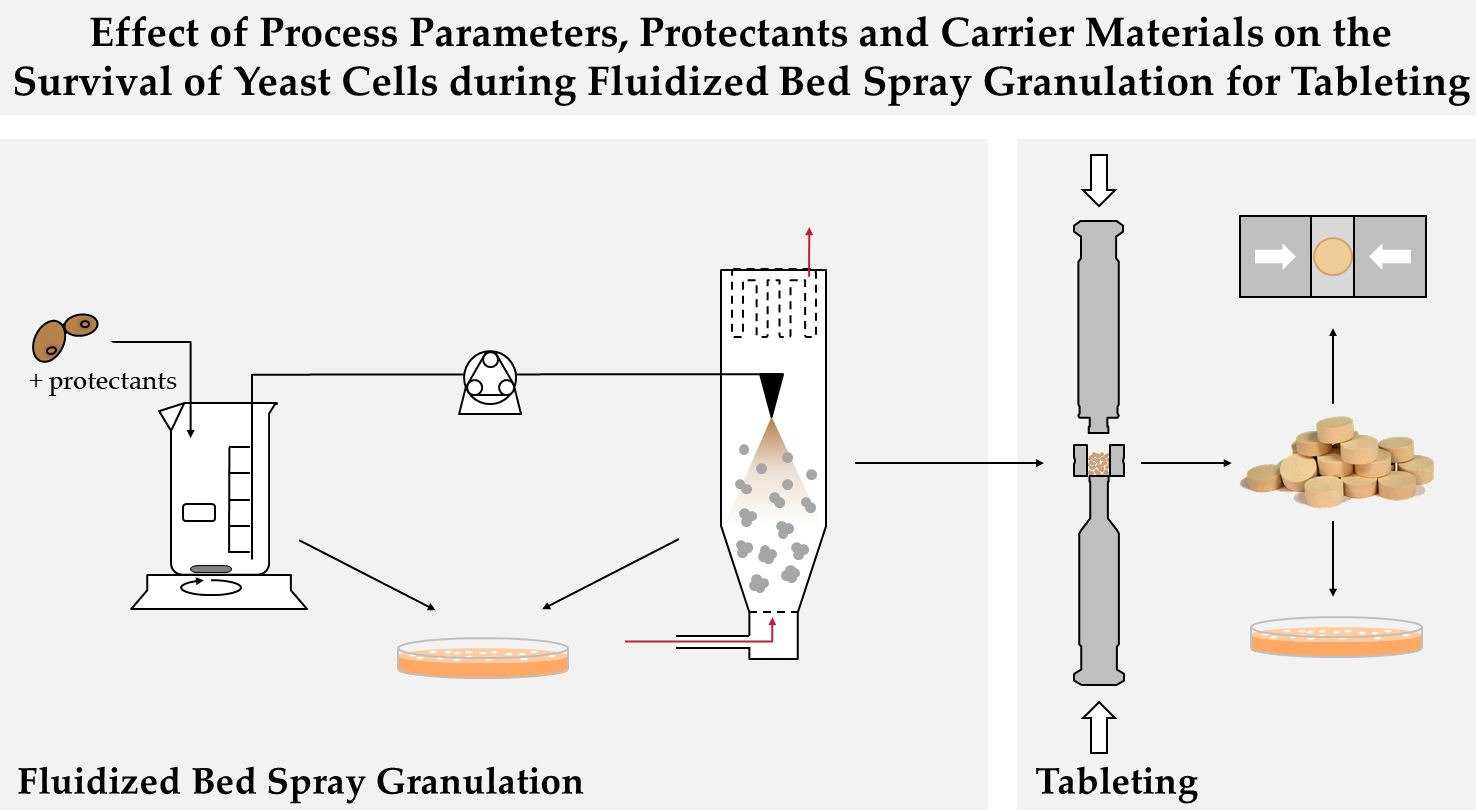Effect of Process Parameters, Protectants and Carrier Materials on the Survival of Yeast Cells during Fluidized Bed Granulation for Tableting

The administration of living microorganisms is of special interest, with regard to probiotic microorganisms providing health benefits to the patient. Effective dosage forms require the preservation of microbial viability until administration. Storage stability can be improved by drying, and the tablet is an especially attractive final solid dosage form due to its ease of administration and its good patient compliance. In this study, drying of the yeast Saccharomyces cerevisiae via fluidized bed spray granulation is investigated, as the probiotic Saccharomyces boulardii is a variety of it.
Fluidized bed granulation enables faster drying than lyophilization on the one hand and lower temperatures than spray drying on the other hand, which are the two predominantly used techniques for life-sustaining drying of microorganisms. Yeast cell suspensions enriched with protective additives were sprayed onto the carrier particles of common tableting excipients, namely, dicalcium phosphate (DCP), lactose (LAC) and microcrystalline cellulose (MCC). Different protectants, such as mono-, di-, oligo- and polysaccharides, but also skimmed milk powder and one alditol, were tested; as they themselves, or chemically similar molecules, are known from other drying technologies to stabilize biological structures such as cell membranes, and thus, improve survival during dehydration.
With the combined use of trehalose and skimmed milk powder, survival rates were 300 times higher than without the use of protective additives. In addition to these formulation aspects, the influence of process parameters such as inlet temperature and spray rate were considered. The granulated products were characterized regarding their particle size distribution, moisture content and the viability of the yeast cells.
It has been shown that thermal stress on the microorganisms is especially critical, which can be reduced, for example, by reducing the inlet temperature or increasing the spray rate; however, formulation parameters such as cell concentration also influenced survival. The results were used to specify the influencing factors on the survival of microorganisms during fluidized bed granulation and to derive their linkages. Granules based on the three different carrier materials were tableted and the survival of the microorganisms was evaluated and linked to the tablet tensile strength achieved. Using LAC enabled the highest survival of the microorganisms throughout the considered process chain.
2.2. Granulation Procedure
Download the full study as PDF here: Effect of Process Parameters, Protectants and Carrier Materials on the Survival of Yeast Cells during Fluidized Bed Granulation for Tableting
or read it here
Vorländer, K.; Bahlmann, L.; Kwade, A.; Finke, J.H.; Kampen, I. Effect of Process Parameters, Protectants and Carrier Materials on the Survival of Yeast Cells during Fluidized Bed Granulation for Tableting. Pharmaceutics 2023, 15, 884.
https://doi.org/10.3390/pharmaceutics15030884

